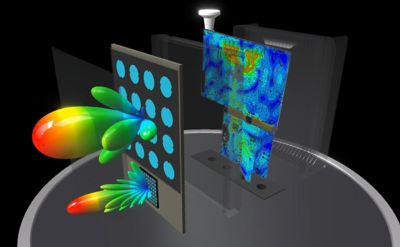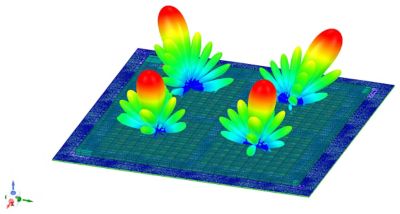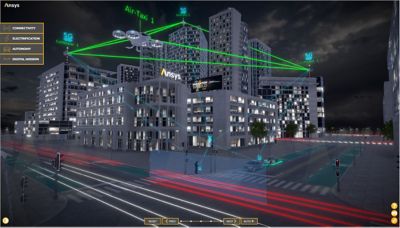-
-
Software gratuito per studenti
Ansys potenzia la nuova generazione di ingegneri
Gli studenti hanno accesso gratuito a software di simulazione di livello mondiale.
-
Connettiti subito con Ansys!
Progetta il tuo futuro
Connettiti a Ansys per scoprire come la simulazione può potenziare la tua prossima innovazione.
Paesi e regioni
Customer Center
Supporto
Partner Community
Contatta l'ufficio vendite
Per Stati Uniti e Canada
Accedi
Prove Gratuite
Prodotti & Servizi
Scopri
Chi Siamo
Back
Prodotti & Servizi
Back
Scopri
Ansys potenzia la nuova generazione di ingegneri
Gli studenti hanno accesso gratuito a software di simulazione di livello mondiale.
Back
Chi Siamo
Progetta il tuo futuro
Connettiti a Ansys per scoprire come la simulazione può potenziare la tua prossima innovazione.
Customer Center
Supporto
Partner Community
Contatta l'ufficio vendite
Per Stati Uniti e Canada
Accedi
Prove Gratuite
ANSYS BLOG
March 31, 2023
Design, Test, and Deployment of 5G Networks With Cost and Performance Targets
Most discussions on 5G focus on the technological wizardry of the standard and the potential benefits to users — how the bandwidth and range of the new technology will lead to magical functionality and content, and so forth. What such stories avoid, however, are an exploration of the myriad of engineering difficulties confronted by design teams that are trying to fulfill the implied promises of the standard.
Service providers have to deliver on the level of performance required to meet customer expectations for service quality and capabilities. At the same time, these same providers need to offer pricing attractive to users to be competitive. This combination of market pressures generates a total cost of ownership (TCO) to which the service providers must conform to remain viable. The TCO is measured by a number of key performance indicators (KPI) in two broad categories: technical capability (i.e., coverage, capacity, MIMO performance) and the product’s lifetime (i.e., long-term reliability, power consumption and overall weight).
These KPIs become requirements that cascade down to the system houses developing the equipment for 5G networks: base stations and smaller cells (metro-, micro-, femto-, and picocells) with their associated antenna arrays. In turn, the system houses break down these KPIs into detailed specifications for the communication nodes they develop, which is essentially an antenna, its supporting circuitry on a printed circuit board (PCB), and a box or case to contain the PCB and carry the antenna.
The critical component is, of course, the antenna. Everything else in the system design conforms to and depends on it. Let’s break down the challenges faced by 5G system design teams in developing the best antenna they can.

Electromagnetic simulation of a 5G beam steering unit (BSU) antenna using Ansys HFSS.
The Design Team’s Point of View
The primary concerns for the engineers engaged in 5G antenna design fall into three general categories: design, verification and testing, and deployment. The categories, however, are not sovereign and self-contained, but are interdependent.
Antenna Design
5G will push multi-user multiple input and multiple output (MU-MIMO) arrays to new levels of capability. The design of such an antenna to meet network requirements is, however, fraught with hazards. Radiating elements must reach maximum performance for their given physical aperture, cover their specified broadcast range and user load, cleanly support multiple bandwidths, properly form beams, and support bandwidth efficiency capabilities such as fixed satellite service (FSS) and adaptive modulation and coding (AMC, sometimes referred to as link adaptation). At the same time, designers must address any coupling effects induced by antenna operation, as well as identify and compensate for random effects or other sources of signal loss, such as impedance mismatches, radio frequency interference (RFI), and so forth. Creating such a complex component requires flexibility, adaptability, and a knack for experimentation on the part of designers.

5G MIMO radiating elements using Ansys HFSS.
Antenna Verification and Testing
There are multiple factors complicating the verification of the antenna’s complete function over the intended lifetime of the system. Part of this verification involves the basic operation of the system itself; not just the antenna, but its supporting circuit components and board as well. The more pressing factor, however, is the effect of the operating environment on the antenna and the system as a whole, including wind, rain, snow, ice, static charge accumulation, blazing summer heat, dust, hail, sand storms, lightning strikes, and freezing cold.
What’s worse is that these effects can compound each other. Heat from either signal conduction or weather will make components expand, creating mechanical stresses that feed back into conductivity. Wind can distort antenna shapes, affecting the signaling environment. The very weight of the system also affects its viability over time.
The methods designers employ to mitigate these problem sources are multiple. Weight becomes a design limit for both antenna and system, with estimates for wind loading serving as a further constraint. Power management schemes can extend time to failure (TTF) at the chip, board, and system level. A profusion of variables can be estimated from a reliability perspective, such as component and board reliability, power consumption, periods of backup power, operating frequencies, propagation effects, thermal/electrothermal effects on data coverage and interference, and electrical performance drift — even with environmental, power, and performance “corners” as constraints.
Unfortunately, the methods above also become an impediment to timely design completion and deployment. They end up being an obstacle to design optimization through experimentation, as the testing and verification effort has to be repeated (at least partially) for every iteration.
Antenna Deployment
Once a network is deployed, it is expected to work reliably and perform to specification on demand — including support for a broad variety of user platforms, efficient and maximal use of bandwidth and channels, high signal strength, and superlative data rates along with minimal signal delays. Yet a plethora of factors exist to thwart these objectives.
User loads are widely variable and dynamic. There are risks of unwanted antenna interactions between base stations, lower hierarchy cells, and user platforms. The broadcasting environment itself presents many potential headaches, as it is electrically active. Furthermore, urban environments present physical obstacles that can absorb or deflect transmissions, creating dead zones, signal interruptions, and propagation delays. The existing infrastructure can even present problems for efficient cell deployment.
Service providers expect system houses to develop cells and antennae that compensate for all of these problems. They want 5G hardware that allows them to offer low-cost, high-quality communication and data services to their customers, no matter what the environmental circumstances may be.

Urban 5G network in Ansys HFSS.
The Simulation Solution
With nearly five decades of history in the development of computational multiphysics, Ansys offers a wealth of simulation technology that is both broad and deep. Ansys HFSS provides a multitude of solvers and numerical methods that support the modeling and simulation of electromagnetic phenomena, from discrete components and packaged chips up to entire aircraft and urban wireless networks — from micro to macro. This includes finite element, method of moments, and SBR solvers; 3D component libraries and layout capabilities; adaptive meshing; and domain decomposition.
The crown jewel of HFSS is its unique Mesh Fusion function that captures geometries both large and small with mathematical precision and without the attendant errors of estimation or compromise. With Mesh Fusion, an object that is both large and intricate can be encompassed in a single model for simulation with industry-recognized gold-standard accuracy.
HFSS can be used in conjunction with a number of other Ansys simulation tools. Together, these simulators provide the capability to model and simulate a 5G network and all its components in every physical dimension — mechanical, thermal, structural, and electromagnetic — to provide true computational multiphysics support for the virtual prototyping of high-complexity, high-function products and systems.
All of this comes together to support the rigorous requirements for developing and deploying 5G wireless networks. At the level of antenna design, simulation tools and workflows exist to guide designers to the best solution across frequencies, antenna configurations, and materials. Designs can be optimized and dynamically fine-tuned across multiple parameters — such as data rates, capacity, throughput, latencies, connectivity, and coverage — while maintaining the ability to innovate and experiment iteratively and quickly. This allows Ansys to offer a unique level of simulation competence to support the design of massive MU-MIMO antenna arrays.
Such simulations can also incorporate all environmental effects on the structural, thermal, and electrical integrity of these systems. You can even skip the wind tunnel trials — antenna deformations and failures along with mechanical stresses from structural loads can be simulated in full detail.
The ideal placement and operation of network nodes can be planned entirely from simulation results. Steerable beams can be modeled along with adjustable widths and power levels. Signaling can be analyzed in 3D to mitigate potential problems from a complex radio frequency (RF) environment in an urban area, along with hazards such as multipath propagation, reflection, absorption, shadowing, blockage areas, and dead zones. Cell/node placement can be planned to ideally accommodate or exploit existing infrastructure. The impact of system size, weight, power, and cost (SWaP-C) on network deployment can be optimized for all factors, along with consideration for performance and ruggedness under the full range of potential environmental stresses.
Simulations are scalable across variations in geometry and area with rapid run times through workflow automation. In addition, Ansys simulators provide extensive support for distributed computing that parallelizes computations and uses system memory resources efficiently.
The many advantages to using computational multiphysics simulation as an integral part of the methodology for 5G system design, reliability evaluation, and node deployment stem from Ansys tools’ ability to virtually prototype all aspects of the development. Building physical prototypes to test functionality, reliability, and over-the-air (OTA) operation is slow and expensive. Through virtualization, experiments on design choices and feature enhancements are basically free of risk, while development schedules can be reduced in both time and cost. Design teams ultimately release superior products earlier than their competitors.
Learn more in our on-demand webinar: Base-Station Antenna System Design for 5G/6G Communications.